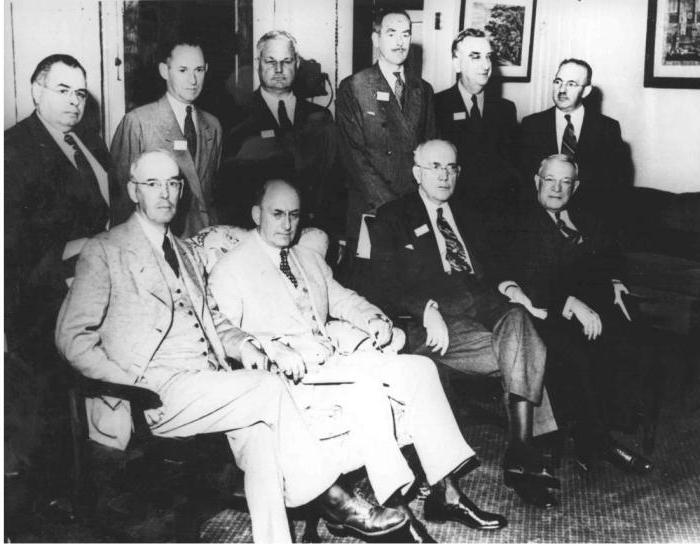Everyone who is interested in the development of the global economy needs to understand the historical background that led to the current situation. To understand the causes of crises that shook more than one state, you need to look for causes in the past. One of the most important principles of the modern economy has become the gold standard.

What it is?
The gold standard system is an international monetary system that is based on the officially fixed gold content of each individual unit of the national currency. Central banks of states are obliged to make transactions of sale of national currency in exchange for this metal. That is, in fact, we are talking about a fixed rate of national monetary units, which was established in relation to it. The gold standard stipulated that any person could exchange a banknote for an appropriate amount at any time. precious metal.
For example, a banknote of 20 US dollars in 1928 was equivalent to one troy ounces gold (31.1 grams).
Thanks to the introduction of such national standard the monetary unit could be freely converted into a valuable metal domestically. The state could also regulate the exchange rate due to the influx or outflow of precious metals, without restricting its export or import. This approach made national currencies very stable.
The essence of the gold standard is quite simple, but at the same time it helped to solve many economic problems of that time. Unfortunately, modern realities have demanded changes, and this system had to be abandoned.

History of occurrence
The century of his existence was short-lived, but he radically changed the world monetary system. The first country to implement the gold standard was Great Britain. This happened in the 19th century. The development of the gold standard in the world has acquired an avalanche-like character. The USA, Germany, Belgium, France and other countries have adopted this economic principle into service. The stability and development of the economy at that time was ensured by the gold standard. He was introduced in Russia by the famous reformer, Minister of Finance Sergey Witte. In 1898 tsarist Russia allowed to sell and buy gold coins.

When the gold standard was canceled
Historians and economists speak of two stages in the implementation of the gold standard - from 1880 to 1914, that is, before the First World War, and from 1925 to 1934. The first stage is characterized by rather small state budgets, low inflation, and more or less uniform economic cycles. London at that time was the center of financial life and regulated many areas. Each state had at its disposal a sufficient supply of gold for the functioning of the system. But at that time the first problems already appeared: coinage did not keep pace with the pace of economic growth and could not fully meet the growing needs.
The First World War and the economic chaos inherent in any military operations put an end to the first stage of the existence of the gold standard. In the mid 20-ies of the last century, Great Britain tried in every possible way to restore its existence, but then a large-scale economic crisis intervened - the great depression. Some countries tried to stabilize the situation through the gold exchange system. It means that the exchange rate of the national currency is not tied to gold, but to another currency, which is nevertheless provided with this precious metal.But directly, the national currency could not be exchanged for it. European countries focused on the pound sterling.
However, Great Britain itself in the early 30s abolished the gold standard, which it once introduced first. The reason for this was the fact that many European countries have accumulated a significant supply of pounds and exchanged it in London for a precious metal. Thus, the country's gold reserves began to decline rapidly, which, of course, could not be met with approval.

Reasons for cancellation
There were many reasons, but the great shocks in the form of the largest in the history of the war in Europe (at that time) and the economic crisis made the main contribution. The gold standard, which worked perfectly in stable circumstances with projected development, became a hindrance in troubled times.
High post-war inflation had a decisive influence on the decision of many state leaders. The result was the abolition of the tight binding of national currencies to gold.

Benefits
One of the main advantages, of course, is the stability of exchange rates. The countries that introduced this system provided an incentive for the development of international trade, the volumes of which were constantly growing. Exchange rates were easily predicted, and this gave confidence in the strength of trade relations and the ability to fulfill their obligations. Also, deficit balances were almost automatically eliminated due to the free import or export of gold outside the country.
disadvantages
There is no such financial system that does not have its drawbacks. This also applies to the gold standard, which, unfortunately, limited the maximum growth opportunities for the economy to the state’s reserves of this metal. There is also a risk of significant depletion of such strategic reserves if the demand for foreign currency exceeded supply. This made states potentially vulnerable.

Bretton Woods Agreement
After World War II, the understanding came that the necessary new economic model for states destroyed by the hostilities and their economies. A year before the end of the war, a large international conference was held in the small American town of Bretton Woods, in which 44 states participated, including the USSR. It identified the main features of the future economic system. No one intended to return the classic gold standard. The economies of many European countries were devastated and could not sustain the provision of national currencies with hard metal. Nevertheless, the principles remained. Now, national currencies were not tied directly to gold, but to those currencies that were provided to them. By the end of the war, only two countries could offer their currencies as starting points - Great Britain and the United States. However, the role of Great Britain was shaken by a serious crisis that erupted in the country in 1947. Since then, this function has been performed by the American dollar.

The development and collapse of the gold exchange system
Despite the brilliant prospects, the gold standard has lost its original meaning. As part of the agreements reached at Bretton Woods, it was the dollar that replaced gold and began to play the role of the world's reserve currency. However, some restrictions were introduced. For example, the national currencies of countries were equated to the dollar at a certain rate, and exchange rate fluctuations should remain within 1%. The United States at the same time assumed the obligation to exchange dollars for gold without any restrictions. Such a system is called the gold exchange system. It is more complex than the original gold standard, but economic and political realities required new solutions.
Prospects for a Standard in the World Economy
The gold standard was of great importance for the development of the economies of individual countries, as well as for understanding the interdependence of states on the general trends of the world economy, which cannot be fenced off.
It was the first principles that made possible the emergence of a new economic model for regulating national currencies. By the way, it was during the Bretton Woods Conference that it was decided to create the International Monetary Fund and the International Bank for Reconstruction and Development. The latter is often called the World Bank, which speaks of its role and impact on ongoing processes.
The Bretton Woods system existed until the mid-60s, when it came to understand the need for further reforms in connection with the changing circumstances.
In the mid-70s, the Jamaican Conference was held, the results of which are valid to this day. It was she who finally abolished the gold security of national currencies, and also abolished the officially established price of gold, which became a common commodity. Its price was regulated by the usual market principles of supply and demand.
From time to time, there are conversations of politicians and economists about the need to return to the gold standard, but so far, modern economic realities do not allow to realize these plans.








